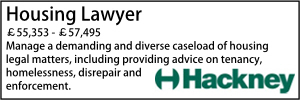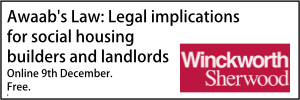Public disorder and possession
- Details
Andy Moore reviews the tools available to tackle anti-social behaviour, considering in particular the grounds for possession that can be used to deal with serious public disorder.
The Anti-social Behaviour, Crime and Policing Act 2014, among other tools to tackle Anti-Social Behaviour, introduced specific grounds for possession to deal with serious public disorder.
These grounds for possession are relevant to both secure tenants and assured tenants.
Discretionary Grounds for Possession
Specific discretionary grounds for possession are available in relation to dwelling houses in England under Ground 2ZA to Schedule 2 to the Housing Act 1985 for secure tenancies and under Ground 14ZA to Schedule 2 to the Housing Act 1988 for assured tenancies.
Both grounds require that the tenant or an adult residing in the dwelling house has been convicted of an indictable offence which took place during, and at the scene of, a riot in the United Kingdom.
In these grounds:-
- “adult” means a person aged 18 or over;
- “indictable offence” does not include an offence that is triable only summarily by virtue of section 22 of the Magistrates’ Courts Act 1980 (either way offences where value involved is small);
- “riot” is to be construed in accordance with section 1 of the Public Order Act 1986.
Absolute Grounds for Possession
Mandatory grounds for possession are also available in relation to dwelling houses in England under Section 84A to the Housing Act 1985 for secure tenancies and under Ground 7A to Schedule 2 to the Housing Act 1988 for assured tenancies.
There are five conditions applicable for the absolute ground under Section 84A and Ground 7A with Condition 1 being the most relevant:-
Condition 1 is that:-
(a) the tenant, or a person residing in or visiting the dwelling-house, has been convicted of a serious offence, and
(b) the serious offence—
(i) was committed (wholly or partly) in, or in the locality of, the dwelling-house,
(ii) was committed elsewhere against a person with a right (of whatever description) to reside in, or occupy housing accommodation in the locality of, the dwelling-house, or
(iii) was committed elsewhere against the landlord of the dwelling-house, or a person employed (whether or not by the landlord) in connection with the exercise of the landlord’s housing management functions, and directly or indirectly related to or affected those functions.
The list of serious offences can be found in Schedule 2A to the Housing Act 1985 and includes offences such as:-
- An offence under the following sections of the Public Order Act 1986:-
- Section 1 (riot),
- Section 2 (violent disorder),
- Section 3 (affray).
- An offence under any of the following provisions of the Crime and Disorder Act 1998:-
- Section 29 (racially or religiously aggravated assaults),
- Section 31(1)(a) or (b) (racially or religiously aggravated offences under section 4 or 4A of the Public Order Act 1986),
- Section 32 (racially or religiously aggravated harassment etc. ).
- An offence under either of the following sections of the Prevention of Crime Act 1953:-
- Section 1 (prohibition of the carrying of offensive weapons without lawful authority or reasonable excuse),
- Section 1A (threatening with offensive weapon in public).
- An offence under any of the following sections of the Theft Act 1968—
- Section 8 (robbery or assault with intent to rob),
- Section 9 (burglary),
- Section 10 (aggravated burglary).
- An offence under section 1 of the Criminal Damage Act 1971 (destroying or damaging property).
- An offence under section 30 of the Crime and Disorder Act 1998 (racially or religiously aggravated criminal damage).
Also of particular relevance are Inchoate Offences which includes offences such as:-
- An offence of attempting or conspiring the commission of an offence specified or described in Schedule 2A to the Housing Act 1985.
- An offence under Part 2 of the Serious Crime Act 2007 (encouraging or assisting) where the offence (or one of the offences) which the person in question intends or believes would be committed is an offence specified or described in Schedule 2A to the Housing Act 1985.
- An offence of aiding, abetting, counselling or procuring the commission of an offence specified or described in Schedule 2A to the Housing Act 1985.
Andy Moore is a Partner and Head of Anti-Social Behaviour and Leasehold (Social Housing) at MSB Solicitors.
Must read
Fix it fast: How “Awaab’s Law” is forcing action in social housing
Housing management in practice: six challenges shaping the sector
Why AI must power the next wave of Social Housing delivery
Sponsored articles
Walker Morris supports Tower Hamlets Council in first known Remediation Contribution Order application issued by local authority
Unlocking legal talent
09-12-2025 1:00 pm
11-12-2025 11:00 am







































